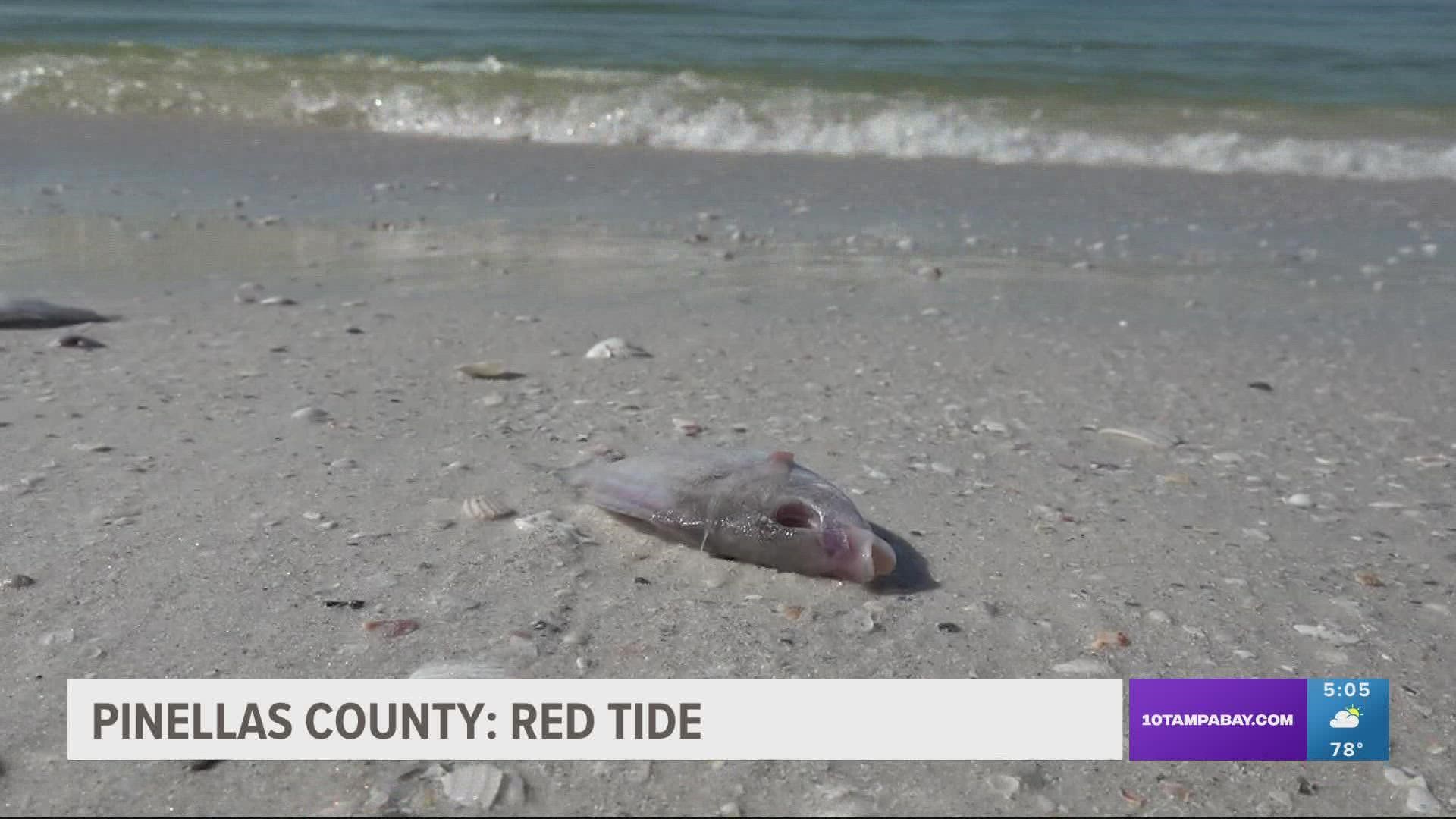PINELLAS COUNTY, Fla. — If you're wondering why you're coughing on the beach, red tide is likely to blame along some Pinellas County beaches.
The Pinellas County Department of Health issued a health advisory on Friday morning as some areas show high levels of concentration of the toxic algae, known as red tide.
The latest data from FWC puts Pass-A-Grille beach at a medium level for red tide. If you head out there, you can tell immediately with the smell of dead fish and the inevitable coughing that comes with red tide exposure.
"Obviously, this is something that's a health concern, because people – if they stay around the red tide effect areas – can get cold-like symptoms, so runny eyes, stuffy nose, scratchy throat, things like that," Tom Iovino, a spokesperson for the Pinellas County Department of Health, said. "So we're telling people, if they are experiencing those symptoms, just stay away from the water."
For Florida tourists, checking for red tide before planning your beach trip isn't always top of mind.
"I should have paid closer attention to the television," Tim Scott said.
He and his family are in town for the week from Pennsylvania.
"I heard there was red tide south of us but wasn't expecting it here in Pass-a-Grille today," Scott said.
Checking for red tide is as simple as visiting FWC's website, which is updated regularly as new samples are taken each week.
"We'll be checking out the forecast and finding a beach that's a bit more enjoyable," Scott said.
With high concentrations of red tide in Pinellas County, the county will start to do some of its own testing, in addition to FWC. Starting next week, Pinellas County will begin daily testing for red tide and post the data to its website on a GIS map.
If you're at the beach and brush off red tide symptoms, health experts recommend you think twice.
"It's obviously a concern," Iovino said. "You know, it's one of the things that we do is we work very closely with the Fish and Wildlife Commission, just to make sure that we keep an eye on the levels of the red tide cells that are in the water."
If you're new to the area or a Florida native, FWC wants you to know red tide can impact you even if you don't see or smell dead fish nearby.
"So there can be red tide associated with fish kills or not," Dr. Katie Hubbard, a research scientist with FWC, said. "And there may be fish kills ongoing that are not necessarily visible. And so we advise people to make yourself aware of basically what's going on."
Hubbard said there is a large algae bloom working its way north along the gulf coast.
"This is a bloom that's moved up from the south," Hubbard said. "And we've been tracking it for a little while now since Ian passed. And in terms of what we're seeing, using satellite imagery that's produced by both NOAA and USF are seeing that that bloom is extending approximately 15 miles offshore."
That algae bloom wasn't here before Hurricane Ian, Hubbard said.
If you're wondering when red tide will clear, FWC says they're only able to forecast a couple of days ahead, because of how quickly conditions can change.
If you see dead fish, FWC asks you report it. Submit a report of a fish kill online, or call the Fish Kill Hotline: 800-636-0511.
Malique Rankin is a general assignment reporter with 10 Tampa Bay. You can email her story ideas at mrankin@10tampabay.com and follow her Facebook, Twitter, and Instagram pages.

